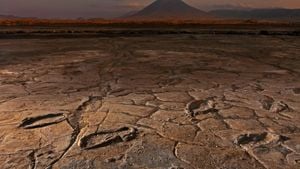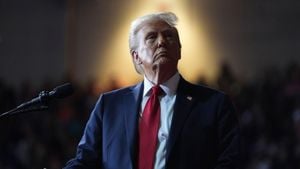After more than 14 months of fighting, the recent ceasefire agreement between Hezbollah and Israel has brought both palpable relief and deep uncertainty to Lebanon. The ceasefire, brokered by the United States and France, stipulates the withdrawal of Israeli forces from southern Lebanon, regions primarily controlled by Hezbollah, and outlines the deployment of the Lebanese military to the border area.
This deal, celebrated widely among some factions within Lebanon, has nevertheless raised serious concerns among others, reflecting the fractured emotions within the society. Joy erupted across parts of Beirut as families displaced by conflict began packing their belongings to return home. Many residents waved flags and honked horns, marking not only their return but what they viewed as triumph over adversity.
For many Lebanese, though, the current situation is overshadowed by stark realities. The humanitarian toll has been staggering, with around 4,000 casualties reported and over 1 million people displaced. The infrastructure is devastated, with cities like Tyre showing visible signs of severe destruction. Residents returning to their homes report finding buildings reduced to rubble, and the heartbreak is evident as they sift through the remains of their lives.
Mohamad Marouf, one such resident, expressed his sorrow upon inspecting the ruin of his home. "I'm so sad, it's a nice and decent house," he lamented as he surveyed the twisted metal and broken concrete. His plight is echoed by countless others who returned to find nothing but memories where their homes once stood. Many now live with family or friends, unsure of when they’ll be able to return to their own homes.
While celebrations filled the air, skepticism loomed large among residents near the Israeli border. Despite the ceasefire, the Israeli military has reported numerous violations, claiming to have engaged Hezbollah targets shortly after the truce began. This has caused unrest and uncertainty among the Israeli populace, particularly near the northern border, where residents expressed concerns over their safety and the effectiveness of the ceasefire.
The feeling of unease is compounded by comments from local leaders. Michael Kabesa, the mayor of Hatzor Haglilit, described the ceasefire as more of a “surrender agreement” than actual peace, voicing worries about Hezbollah’s enduring influence and the prospect of future conflict. He emphasized the need for military presence on the border to restore confidence among his community. Many residents, still nursing emotional scars from past confrontations, are hesitant to return home permanently without assurance of safety.
Even amid this fragile calm, the broader political picture remains turbulent. Lebanon’s deep-rooted financial crisis has left it struggling to finance the reconstruction needed after the devastation wrought by this conflict. Many wonder who will step up to fund rebuilding efforts, which are estimated to cost around 8.5 billion USD. The Lebanese government wrestles with internal divisions over Hezbollah's role and influence, leading to questions about the nation’s future stability and governance.
Internationally, hope has emerged for regional discussions aimed at fostering longer-lasting peace. President Biden has publicly supported the ceasefire as potential groundwork for future agreements involving broader Middle Eastern dynamics. There are indications of willingness from Hamas, Hezbollah’s ally, to engage in similar dialogues, raising the possibility of broader negotiations coming to fruition.
On the sidelines, there is also talk about the broader geopolitical ramifications of the ceasefire. Analysts argue the ceasefire reflects shifting power balances—how it might signal diminishing Iranian influence and hint at a new chapter for Lebanon. Indeed, some have noted the deal’s complexity, emphasizing the necessity of addressing the underlying issues rather than merely putting out fires.
Despite the shining beacon of hope this ceasefire brings, the shadows of war still loom large, and residents are left grappling with the realities of returning to cities marred by violence. Many cling to the notion of rebuilding and healing, but doubts linger. Father Abdallah, from St. Francis Church, expressed cautious optimism, sharing sentiments of both hope and apprehension, stressing the importance of dignity and life moving forward.
This amalgamation of feelings—anticipation mixed with trepidation about future conflicts—reflects the complex nature of Lebanon's socio-political fabric. With so much at stake, the long road to recovery and peace remains uncertain, marked by the hopes of its people amid the ruins of their homeland. Faith remains, even as the question looms—will this ceasefire hold and lead to lasting peace? Only time will tell if Lebanon can truly move forward, or if it will be drawn back to the conflict it longs to escape.
Time will reveal whether this fragile peace can withstand the challenges it faces. But for today, the people of Lebanon look to reclaim their lives, with the desire for quiet streets and the laughter of children echoing through the ruins of what once was. Will they find the resilience to rebuild not just their homes, but their hopes? That remains the enduring question as they step back onto the path of recovery.



